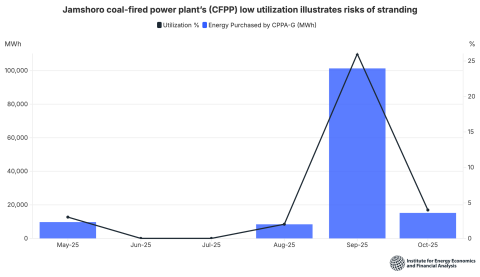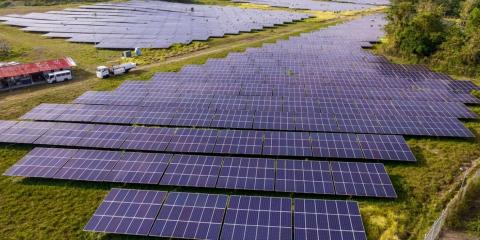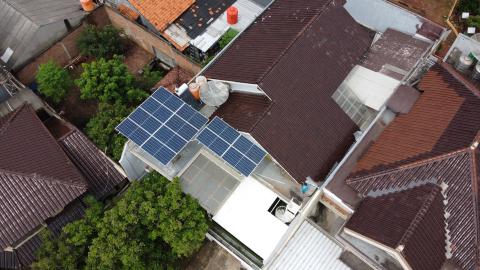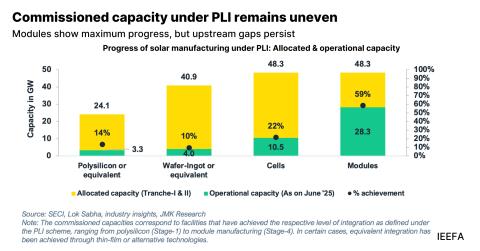Financing India’s climate future: From fragmented flows to systemic resilience
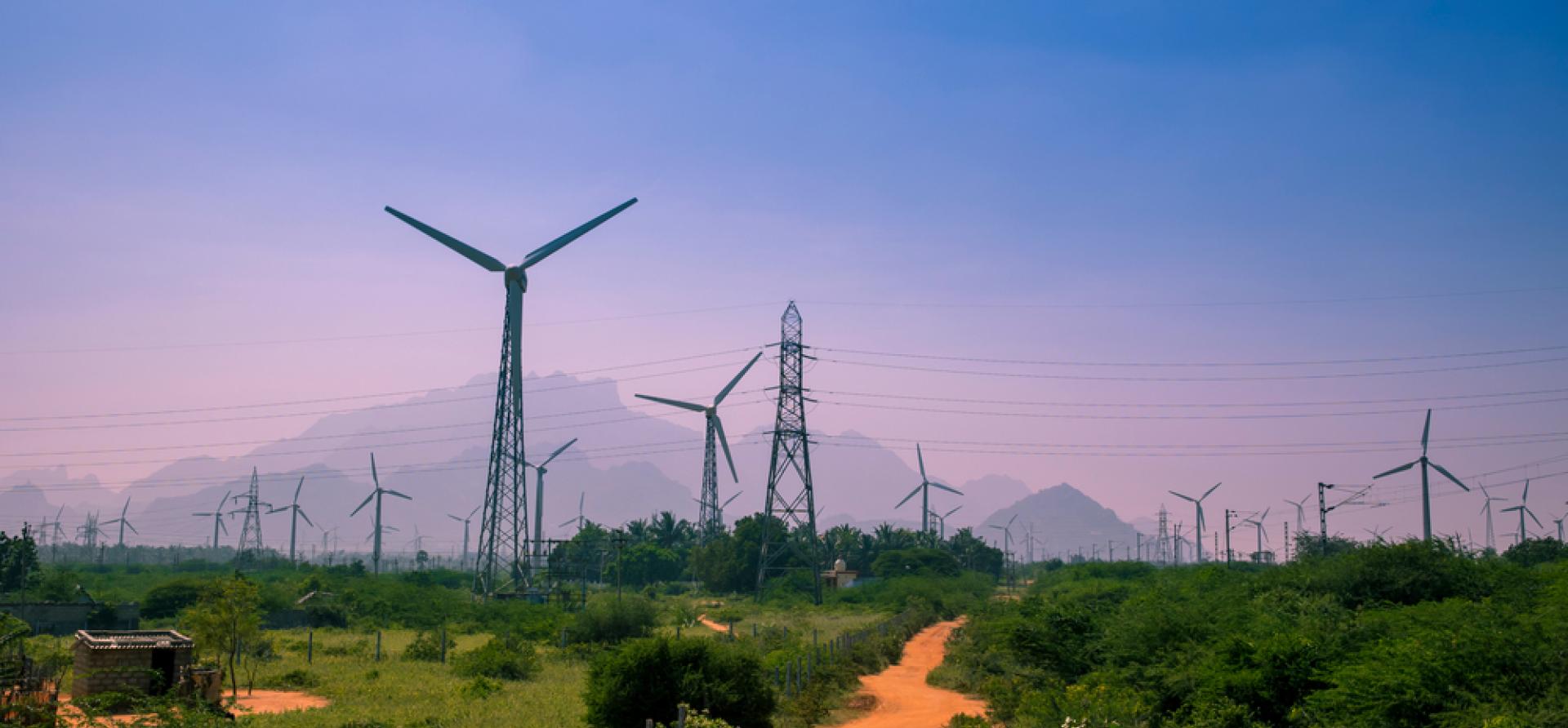
Key Findings
To diversify climate physical risk on investment portfolios, climate finance should move beyond carbon mitigation. Concessional capital from the government or multilateral agencies blended with private investment can help scale resilient infrastructure, especially in vulnerable areas.
For financial institutions, deploying capital through “systemic financing” models rather than fragmented asset-centric approaches can help mitigate climate risk. Systemic financing directed towards grid flexibility and modernisation, storage and demand-side management, resilient supply chains, and interconnected clean energy assets can alleviate climate risks.
The RBI’s inclusion of sustainable finance and climate risk in its regulatory sandbox can enable fintechs and banks to test new risk-analysis tools, green credit products and parametric insurance models. Scaling such an initiative will help bring innovative solutions to the market more rapidly.
India’s evolving taxonomy should clearly define “resilient” activities, such as renewable-powered cold chains or flood-proof housing, to guide investors and policymakers. A robust taxonomy will spur instruments, such as resilience bonds and adaptation-focused green loans, and align capital flows with India’s climate goals.
Climate change poses two major risks to financial institutions’ lending portfolios: physical and transition. Physical risks are collateral-related and stem from climate disasters such as floods, droughts, cyclones and rising sea levels. The recent floods in north-east India and heatwaves in northern India are examples of such risks. Transition risks arise from exposure to financed emissions amid shifts in policy, technology or market sentiment as the world moves towards a low-carbon economy.
As nations embark on the energy transition, governments must plan for building resilient infrastructure that can withstand, adapt to and quickly recover from shocks. Furthermore, they should plan for a Just Transition so that the shift to a low-carbon economy does not deepen existing socio-economic inequalities. With clean energy investment scaling into the trillions, embedding resilience and rethinking mitigation financing are not just optional anymore – they are essential.
Integration of Climate Risk in Financial Decision-Making Process
Financiers and asset managers are increasingly integrating climate risk disclosure standards such as the Task Force on Climate-related Financial Disclosures (TCFD) and the Glasgow Financial Alliance for Net Zero (GFANZ) principles into their operations. These frameworks require assessing physical and transition risks in lending and investment portfolios. The consideration of climate risk has undoubtedly led to a rise in financing for mitigation assets such as renewable energy. However, renewable energy infrastructure is not immune to the impact of climate change, introducing physical risks in financial institutions’ portfolios.
For example, renewable energy assets like solar farms are being assessed for location-specific climate vulnerabilities (e.g. cyclones in coastal India or heatwaves affecting solar panel efficiency).
Durability, Diversification and Decentralisation
Developers are responding to these challenges by incorporating durability and adaptability into their designs to create climate-resilient infrastructure. Examples include elevated solar panel mounts in flood-prone zones and wind turbines engineered for higher gust loads.
At the ground level, energy systems are shifting towards distributed generation (e.g. rooftop solar and microgrids) to enhance resilience. This not only reduces transmission losses but also ensures reliability during large-scale grid failures caused by climate events.
Of course, finance is the fuel powering the innovation demanded by the energy transition. For financing assets such as rooftop solar and microgrids, where viable business models are still being explored, government and non-government concessional finance blended with private capital plays an important role.
Insurers are also stepping up, introducing parametric products to protect assets against climate-induced losses.
Shift from Asset-Centric to Systemic Financing
These developments point towards an emerging trend where both developers and financiers are starting to look at low-carbon investments more holistically. However, much of today’s mitigation finance remains focused on asset-level investments in technologies such as solar and wind generation, often without adequate consideration of the durability and adaptability of these assets in the face of climate disasters.
For banks and investors in renewable energy, the benefits of exposure to climate-resilient infrastructure will take years or even decades to realise. However, as short-term climate-risk scenarios are incorporated by financial institutions in their analysis and stress testing of portfolios, the value proposition of resilient, low-carbon assets is expected to gain more recognition.
The insurance industry is already beginning to acknowledge the importance of factoring in climate resilience. For instance, in the US, hail-related claims on solar farms have become more frequent. In 2022 alone, hail damage drove record losses of US$300-400 million for renewable energy insurers. As a result, solar property insurance premiums in the US have risen by 15-45%, with many insurers capping coverage and avoiding higher individual limits.
Additionally, from a financial institutional standpoint, deploying capital through “systemic financing” models rather than fragmented, asset-centric approaches, can help mitigate climate risk more effectively. A fragmented approach limits the ability of banks and investors to assess interdependencies and manage risks across portfolios in an integrated manner.
Systemic financing directed towards grid flexibility and modernisation, storage and demand-side management, resilient supply chains (e.g. for battery materials) and interconnection between clean energy assets can help alleviate climate risk by addressing the structural barriers that undermine large-scale decarbonisation.
Hence, a financing strategy that prioritises the climate resilience of low-carbon infrastructure and emphasises bundled or portfolio-level investments in clean energy ecosystems can enhance the risk-adjusted return profile for investors.
Enabling Tools: Data, Taxonomies and Budgeting Frameworks
Operationalising such a systemic financing approach will require enabling tools and frameworks. A robust national database on climate adaptation is essential for effective planning and financing. The Reserve Bank of India (RBI) is developing “super databases” to support commercial banks in assessing climate-related financial risks.
In March, the RBI set up a dedicated cohort on climate change risks and sustainable finance under its regulatory sandbox initiative. On 29 May 2025, it launched the Reserve Bank Climate Risk Information System (RBI-CRIS), a two-pronged data platform intended to bridge gaps in climate-relate financial information. That’s a step in the right direction.
Green budgeting and climate finance taxonomy are other vital tools to track and mobilise climate-related investments.
Green budgeting can help embed resilience into public financial management and planning. This will help prioritise resilience investments by allocating public spending for projects that strengthen infrastructure, ecosystems and communities against climate shocks. Tracking adaptation expenditure is equally important to ensure the successful implementation of projects.
Defining ‘Resilient’ Financial Activities
India’s climate finance taxonomy – which is still evolving – classifies economic activities based on their alignment with climate objectives. A robust taxonomy that clearly defines “resilient” financial activities provides clarity to investors, banks and public authorities (e.g. renewable-powered cold chains and climate-resilient housing).
This encourages the development of financial products (e.g. resilience bonds and adaptation-focused green loans), which can help mobilise private investment, improve disclosures and align fiscal planning with India’s National Adaptation Plans, Sustainable Development Goals and Nationally Determined Contributions.
For example, the state budgets of Odisha and Kerala now include climate budget tagging to help identify adaptation-related allocations, and the National Adaptation Fund for Climate Change supports resilience projects tagged in these state budgets.
The Way Forward
To embed resilience and rethink mitigation finance, the shift must be:
- From reactive to anticipatory
- From project-level risk to systemic risk
- From carbon-only metrics to multi-dimensional climate value
- From global north-centric models to local, context-specific solutions.
The dynamic geopolitical environment and rising climate challenges require agility and innovation from financiers and governments alike. Only by shifting from reactive, siloed finance to a proactive, systemic approach can financial systems support the Just Transition that India and other emerging economies urgently need.
This article was first published in Outlook Business.





